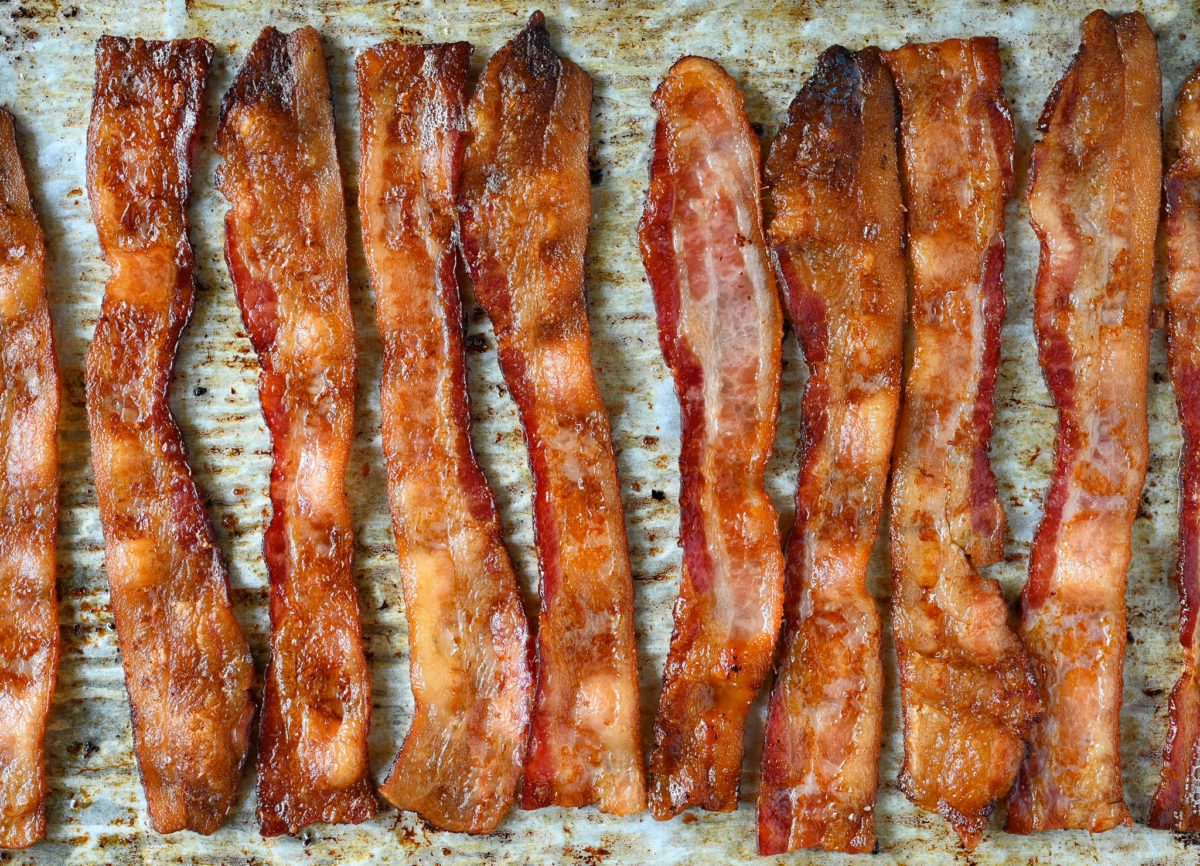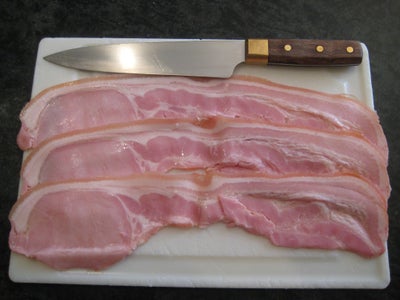Rind-on bacon, with the fatty pork skin still attached, is making a delicious comeback. This old-school preparation adds incredible depth of flavor and irresistible texture when done right. Follow this complete guide to achieve crispy, crackly perfection from this classic bacon style.
What is Rind-On Bacon?
Rind-on bacon keeps the skin or “rind” attached to the pork belly during processing. Most supermarket bacon has the rind removed for a leaner, more uniform product.
Rind-on bacon has become trendy again thanks to its nostalgic old-fashioned appeal. The fatty rind imparts a unique porkiness while adding rich flavor and crunch from the extra fat. It’s an authentic throwback making a comeback among bacon aficionados.
Why Cook with Rind-On?
There are several excellent reasons to try your hand at rind-on bacon:
-
Flavor – The rind provides a concentrated pork essence you can’t get from regular bacon.
-
Texture – When cooked right, the rind becomes irresistibly crispy and crunchy.
-
Tradition – Rind-on bacon is the classic, old-fashioned way it was prepared.
-
Appearance – The rind bubbles and curls beautifully when cooking.
-
Fat – More fat means more rich, meaty bacon flavor.
-
Economical – Using the whole hog prevents waste and saves money.
The rind takes bacon from everyday to extraordinary with little effort when you know how to cook it properly
Prepping Rind-On Bacon
Proper prep is key to delicious rind-on bacon:
-
Let bacon cool after removing from packaging so it firms up for clean slicing.
-
Pat dry thoroughly with paper towels to remove excess moisture.
-
Trim off any unpleasant burnt or hard sections of rind if needed.
-
Cut into slices, strips, or lardons for easier cooking.
-
Score the rind by cutting slashes through the skin but not the meat, allowing for even cooking.
-
Chill in the fridge for 30+ minutes before cooking for stability.
Once prepped, it’s ready to cook using your preferred method.
Best Cooking Methods
There are several excellent techniques for cooking rind-on bacon:
Pan Frying – The classic stovetop method allows fantastic crisping control:
-
Heat a cast iron or nonstick skillet over medium heat.
-
Add bacon slices in a single uncrowded layer.
-
Cook 8-12 minutes, flipping frequently and adjusting heat as needed.
-
It’s done when deep golden brown and sizzling.
Oven Baking – The oven distributes heat evenly around the bacon:
-
Preheat oven to 400°F. Line a rimmed baking sheet with foil.
-
Arrange bacon slices in a single layer.
-
Bake 15-20 minutes, flipping halfway, until crispy and browned.
Microwaving – The microwave cooks the bacon conveniently fast:
-
Place rind-on bacon between paper towels on a microwave-safe plate.
-
Microwave in 30 second bursts until crisped, draining fat between batches.
-
Let stand 1 minute before eating, as it will be very hot.
The method depends on your timeline, desired crispiness, and equipment available.
Cooking Tips for Perfect Results
Follow these tips for flawless rind-on bacon every time:
-
Cook over medium-low heat—high heat toughens the rind.
-
Flip frequently while pan frying.
-
Don’t overcrowd the pan or oven tray.
-
Cook until deep reddish-brown color.
-
Blot grease during and after cooking.
-
Let rest 1-2 minutes to firm the fat after cooking.
-
Save rendered bacon drippings for other uses.
Doneness Cues
Look for these signs your rind-on bacon is fully cooked:
-
Deeply browned color on the rind and meat
-
Bubbly, crispy rind has shrunk and curled
-
Most of the fat has rendered out
-
Mouthwatering bacon aroma
-
Little to no pink color remaining
-
Internal temperature above 145°F
The rind may still be slightly pliable when done. Judge more by color and fat rendering than just texture.
Serving Suggestions
While delicious alone, rind-on bacon enhances many dishes:
-
Breakfast – Chop into eggs, hash browns, pancakes, biscuits
-
Burgers – Top beef or turkey burgers for crunch
-
Salads – Toss crispy bits into leafy, pasta, or potato salads
-
Soups – Simmer rind in bean, veggie, or chicken soups for porky depth
-
Brussels sprouts – Wrap halves in partially cooked rind while roasting
-
Sandwiches – Layer on pulled pork for contrasting crunch
-
Snacks – Sprinkle crumbled crisp rind on nachos, baked potatoes, dips
The applications for rind-on bacon are unlimited.
Storing and Reheating
To retain optimum freshness and texture:
-
Refrigerate in a sealed container up to 1 week. Separate slices with parchment paper.
-
Freeze well-wrapped bacon for 2-3 months.
-
To reheat, gently fry, bake, or microwave until warm, then re-crisp in a hot pan or oven.
-
Use reheated bacon within 1-2 days for best quality.
Making Your Own
For the ultimate rind-on bacon, try curing and smoking it yourself:
Curing – Weigh rind-on pork belly. Calculate cure per weight. Combine salt, sugar, and curing salt and rub into pork. Seal in a bag, removing air, and cure in the fridge 1+ week.
Smoking – Rinse cured pork and pat extremely dry. Air dry uncovered overnight. Prepare smoker with hickory, apple, pecan wood. Hot smoke at 180°F for 4-8 hours until cooked through and nicely darkened. Slice, fry, and enjoy your homemade bacon!
This process allows you to customize ingredients to your taste.
With its old-fashioned appeal and unbeatable crunch, rind-on bacon is having a moment. For maximum flavor and texture, cook it low and slow, and let the rind become irresistibly crispy. Add cooked rind-on bacon to all kinds of dishes for incredible pork essence. Or go whole hog by curing and smoking your own from scratch. Once you master cooking rind-on bacon, you’ll never see regular bacon the same way again.

Step 1: Prepare the Rind of Your Bacon


Introduction: Super Crunchy Bacon Crackling

